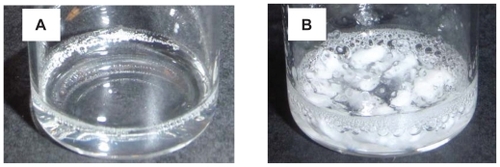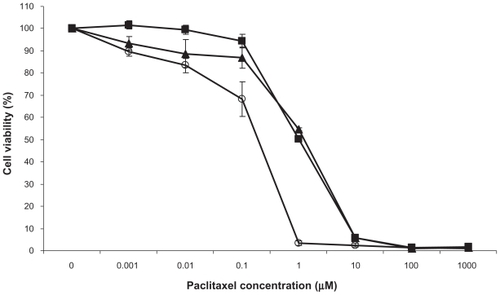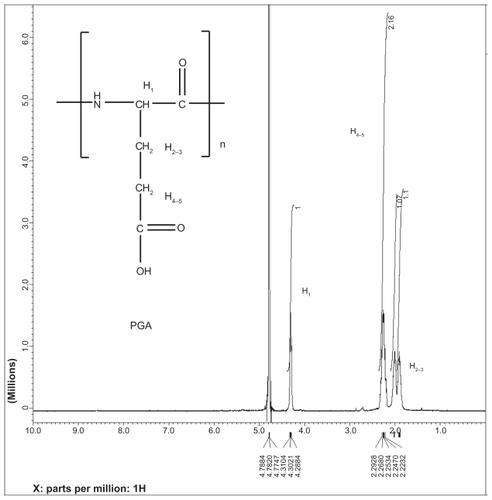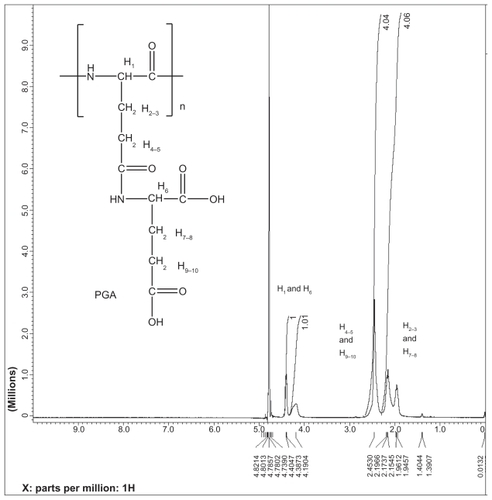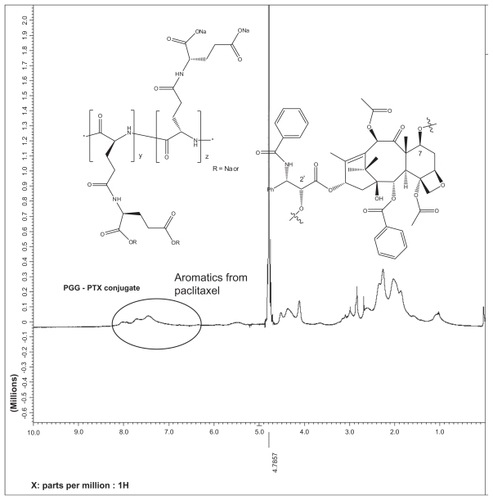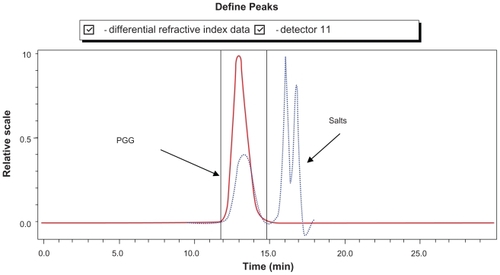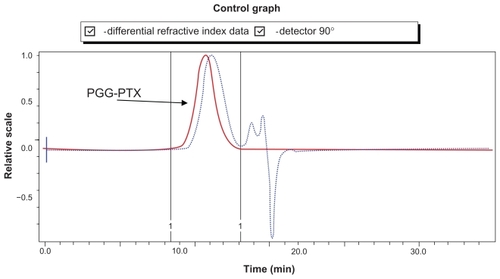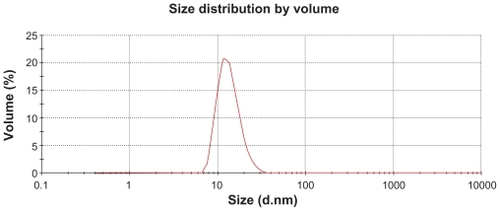Figures & data
Table 1 Characteristics of the PGA and PGG polymers and the PGG-PTX
Figure 1 Synthesis of PGG-PTX nanoconjugate.
Abbreviations: HOBt, hydroxybenzotriazole; TFA, atrifluoroacetic acid; DMAP, 4-dimethylaminopyridine; NaHCO3, sodium bicarbonate; PGA, poly(L-glutamic acid); PGG, poly(L-γ-glutamyl-glutamine); PGG-PTX, poly(L-γ-glutamyl-glutamine)-paclitaxel conjugate.
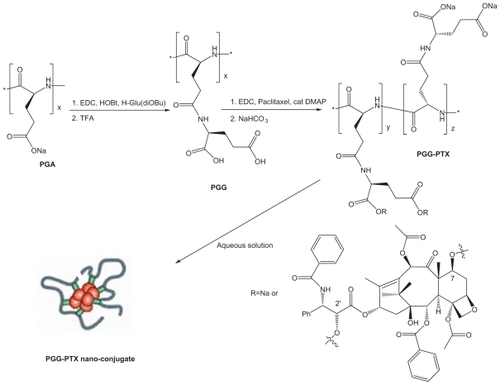
Figure 2 SEC-HLPC chromatograms of PGA, PGG, and PGG-PTX. The chromatograms were recorded at 228 nm. A) PGA; B) PGG; C) PGG-PTX.
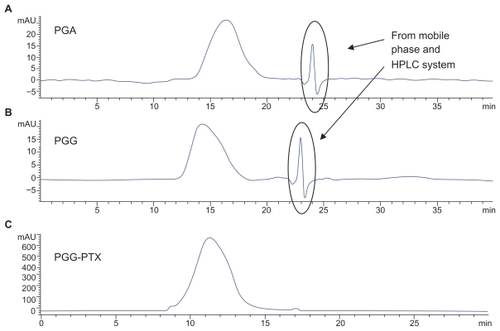
Figure 3 Critical micellar concentration of PGG-PTX nanoconjugate. The DLS could not detect the particle size of PGG-PTX solution below 25 μg/mL. The critical micellular concentration was assumed to be about 25 μg/mL in saline at 25°C. The results are expressed as means ± SD (n = 3).
Abbreviation: DLS, dynamic light scattering.
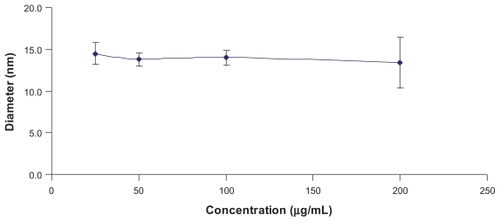
Figure 4 Photographs of a solution of A) PGG-PTX (35% PTX loading) and B) PGA-PTX (32% PTX loading) in saline (0.9% NaCl). The polymer-PTX conjugates were dissolved in 0.9% NaCl at 50 mg/mL after sonication for 1 minute and allowed to stand for 20 minutes.
